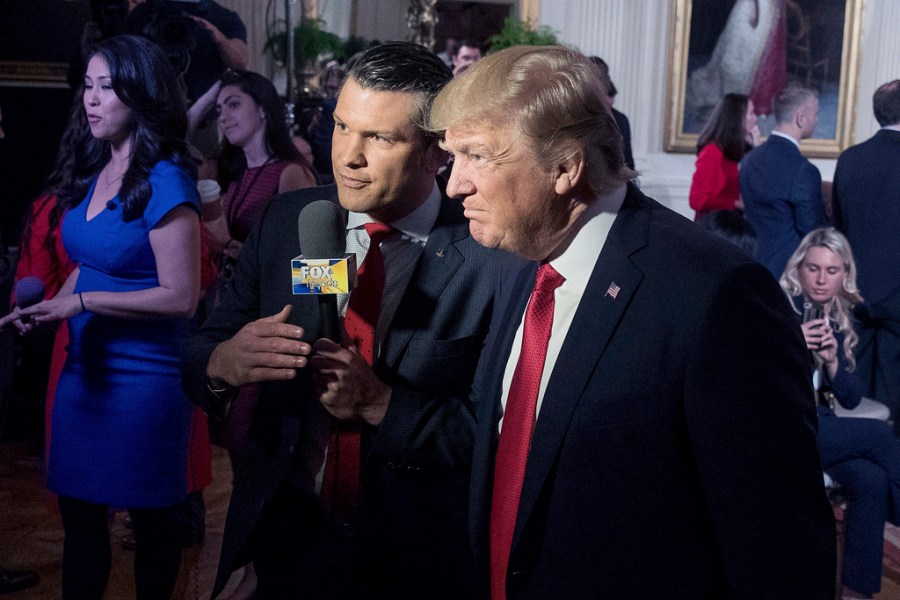
The Trump transition team may think it has a game plan to install controversial nominees in Cabinet jobs, but the conservative Supreme Court is likely to block it.
The regular order would be for the Senate to take up the nominees on inauguration day and quickly confirm them. Several of Donald Trump’s picks, however, are already under fire for lack of qualifications or questionable personal behaviors.
They can’t be blocked by a Senate filibuster, but they could be delayed by holds and extended debate. As we learned when Sen. Tommy Tuberville (R-Ala.) blocked hundreds of military nominations, it takes three days to confirm any individual nomination when a senator objects.
While president, Trump expressed enthusiasm for recess appointments, not least because the interim office holders followed his wishes while auditioning for permanent appointments. But Congress passed a law in the 1990s limiting how long such temporary officials could hold office, and they lacked the full administrative authority of Senate-confirmed officials.
Recess appointees, however, have full authority only until the end of the Congress — in this case until January 2027.
Presidents have clashed with Congress many times over recess appointments, ultimately leading to the 2014 case NLRB v. Canning, when the Supreme Court ruled that a three-day recess of the Senate did not qualify as enough time to justify such appointments. The court presumed that something like 10 days would be necessary.
That appears to be the Trump transition plan: Get Congress to adjourn for 10 days so that the president can appoint controversial nominees. The newly chosen Senate majority leader, John Thune (R-S.D.), promised that this option was “on the table,” but “my preference is going to be to grind it out the way we normally do it.”
Such a recess early in the new administration would delay and complicate its agenda. No other nominees could be confirmed. No emergency money could be approved for deportation of undocumented foreigners. No action could be taken to finish appropriations bills for the fiscal year that started in October. The new Congress itself couldn’t finish the work of organizing its committees and choosing new members.
To ensure passage of a 10-day recess, the Trump people have signaled that they would use an obscure passage in the Constitution that no president has ever tried. Article II, section 3 says: “he may, on extraordinary Occasions, convene both Houses, or either of them, and in Case of Disagreement between them, with Respect to the Time of Adjournment, he may adjourn them to such Time as he shall think proper.” While presidents have often called Congress into session to deal with wars and national emergencies, no one has ever prorogued the legislature as this passage allows.
It probably wouldn’t happen that way, because Speaker Mike Johnson (R-La.) could get the House to pass a 10-day recess and the Senate could agree. Motions to adjourn are not debatable, so there could not be a Senate filibuster. Presidential action is a fallback and looks to be Constitutional.
The nominees could start work immediately — but all their actions could be invalidated by a subsequent Supreme Court ruling.
The Trump team probably doesn’t realize that conservative justices believe that use of recess appointments to avoid Senate advice and consent is a perversion of the constitutional order.
In the NLRB v. Canning case, Justice Antonin Scalia, while agreeing with the decision that three days was insufficient to trigger recess appointments, issued a concurring opinion that declared:
“I would hold that the recess-appointment power is limited to vacancies that arise during the recess in which they are filled, and I would hold that the appointments at issue here — which undisputedly filled pre-recess vacancies — are invalid for that reason as well as for the reason that they were made during the session. The Court’s contrary conclusion is inconsistent with the Constitution’s text and structure, and it further undermines the balance the Framers struck between Presidential and Senatorial power. Historical practice also fails to support the majority’s conclusion on this issue… For the reasons just given, it is clear that the Constitution authorizes the President to fill unilaterally only those vacancies that arise during a recess, not every vacancy that happens to exist during a recess.”
What’s enormously significant here is that Scalia was joined in his opinion by the court’s most conservative members at the time: Justice Clarence Thomas, Justice Samuel Alito and Chief Justice John Roberts. To remain consistent, they would have to oppose recess appointments to fill vacancies existing before the recess.
If the Senate insists on its constitutional right to vote on nominees, this question will never arise. But if it does, look for the court to say no.
Charles A. Stevenson, Ph.D., was a Senate staffer for 22 years and now teaches at Johns Hopkins University. While not a lawyer, he is a Harvard Ph.D. trained in research and analysis of government.

